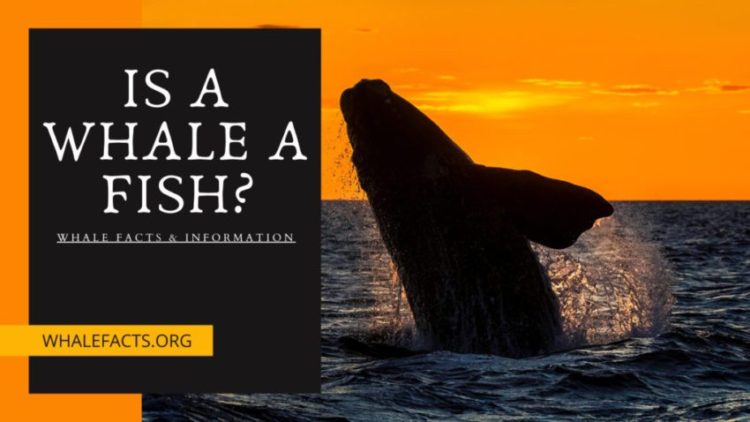One of the misconceptions people have about whales is that they live in the ocean because these animals are fish.
The truth, however, is that whales are not fish; they are actually marine mammals.
Mammals (both land mammals and marine mammals) are warm-blooded animals that breathe air, give birth, and feed their babies with milk, typically produced from the mother’s mammary glands and fed to the baby via the mother’s nipple.
In fact, all cetaceans (cetaceans include all species of whale, dolphin, and porpoise) breathe air and must come to the surface for oxygen otherwise;, they would drown.
On the other hand, fish use gills to extract oxygen from the water, allowing them to survive without ever needing to come to the surface.
Many fish species cannot survive above water because they do not have the specialized lungs or organs necessary to breathe air.
Second, fish do not give birth to their young; instead, they lay eggs which hatch baby fish called larvae that look very different from the appearance of a fish.
However, over the course of a few weeks, the larvae begin to take the shape and appearance of fish.
In terms of the number of children, these animals can have fish capable of laying hundreds or thousands of eggs over the course of a year, while most whales bear only one offspring every 1 – 5 years (twins are rare).
Note: A few fish species (less than 3%) carry their eggs internally instead of dropping them in the water to hatch.
Third, when a fish is born, it is rarely ever taken care of by its parents and doesn’t receive any milk or food from them.
Instead, many fish species are born with a sack attached to them and provide them with the nutrients they need to survive until they can hunt for food independently.
On the other hand, female whales feed their young by producing milk through their mammary glands to provide their baby with the nutrients it needs to develop into a young, healthy adult.
Depending on the species, a baby whale may continue to receive milk from its mother anywhere from 6 months to 2 years.
Fourth, while whales are warm-blooded marine mammals, most fish are ectothermic cold-blooded. Being cold
-blooded allows fish to survive in cold waters without consuming excessive calories or maintaining body fat to keep them warm.
For whales to survive in cold water, they need to have a thick layer of insulating blubber to keep their internal organs from freezing.
Lastly, when it comes to diet, fish play a large role in a whale’s diet.
Many species of whale and dolphin wouldn’t be able to survive if they did not have a steady supply of fish and other small aquatic lifeforms, while fish (depending on their species) consume smaller fish (not all fish eat other fish), larvae, plant life and/or various tiny organisms.
To give you a quick comparison of the differences between whales and fish, we have included some bullet points below.
Characteristics fish have include:
- Gills (used to extract oxygen from water)
- Exoskeleton (cartilage or bone)
- Horizontal movement through water (whales move their tails vertically to propel themselves forward)
- Ectothermic (cold-blooded)
- Lay eggs
Characteristics “almost” all mammals have include:
- giving birth
- being warm-blooded
- breathing oxygen – whales come to the surface for oxygen (mammals would drown in water)
- Producing milk (mammary glands)
- Sweat glands and hair – some whales have hair, but cetaceans, in general, do not have sweat glands (not present in all mammals or species)
